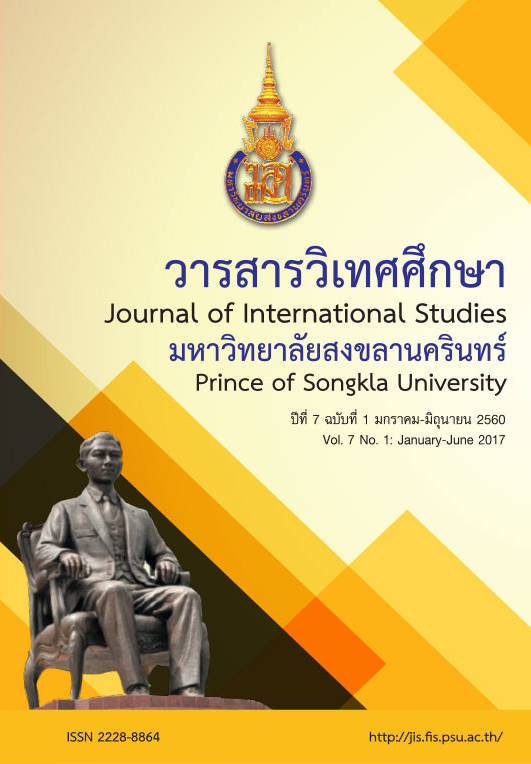Double Identity Representation of Chinese Shrines in Phuket Muang District
Main Article Content
Abstract
“Double Identity Representation of Chinese Shrines in Phuket District” has the main objectives o study the adaptations of Chinese culture in the context of Thai society through Chinese shrine in Muang Phuket District and to comprehend the phenomena of double identity which represent through Chinese shrine in Muang Phuket District. The in-depth interviews and Participant Observation of the Qualitative research methods were used in this study. The Chinese shrines are part of maintaining and expressing Chinese culture. Chinese shrines and Chinese-Thai were adopted with Thai culture and belief. This phenomenon is presented by the double identity form. Chinese Shrines are the expression of the Hybridity of culture and are a central of Chinese culture and double identity through the forms of art, religious activities and figures of god. Chinese shrines are involved with various organizations; both public and private sectors, and have a role to Thai society through the public benefit activities and social welfares. The double identity representation is development of a good relationship between Thai ethnic and Chinese cultural groups.
Article Details
Statements and opinions expressed in articles herein are those of the authors and do not necessarily reflect the position of the editors or publisher.
Article, information, text, image, etc. which are published in Journal of International Studies, belong to Journal of International Studies. If anybody or any organization would like to use part or whole of them, they must receive written permission from Journal of International Studies before usage.
References
ปัญญา เทพสิงห์. (2543). อัตลักษณ์ความเป็นจีน: จากรูปแบบศาลเจ้าจีนและวัดจีนใน เทศบาลหาดใหญ่. เอกสารประกอบการประชุมทางวิชาการระดับชาติ สาขา สังคมวิทยา โดยคณะกรรมการสภาวิจัยแห่งชาติ สาขาสังคมวิทยา (15-16 ธันวาคม 2543) ณ โรงแรมมิราเคิล แกรนด์ คอนเวนชั่น.
สมบูรณ์ สุขสำราญ. (2529). ความเชื่อทางศานาและพิธีกรรมของชุมชนชาวจีน.กรุงเทพมหานคร: โครงการเผยแพร่ผลงานวิจัย จุฬาลงกรณ์มหาวิทยาลัย.
Annette Hamilton. (2008). Difference in Place: Two Chinese Rites In Southern Thailand: School of English, Media and Performing Arts, Faculty of Arts and Social Sciences, University of New South Wales, Sydney.
Geertz, Clifford. (1973). The Interpretation of Cultures, New York: Basic Books.
John Hutnyk. (2005). Diaspora & Hybridity, London: Sage.
Lan Changlong. (2011). Settlement and Cultural Transition: A Case Study of Hokkiens in Bang Nam Phueng Community, Prapradaeng District, Samutprakan Province. Bangkok: Huachiew Chalermprakiet University of Thailand.
Phuwadol Songprasert. (2004). Chin Phon Thale Samai Mai (The Overseas Chinese Today). Bangkok: Higher Press.
Ruenkaew Pattranupravat. (2011). the transmission of the Chineseness (through understanding the meaning and religious symbols) to the descendants of the Chinese in Thai society: University of Thai Chamber of Commerce.
Sivarin Lertpusit. (2006). Dual Society in Sipsong Panna: A Case Study witha Special Focus on the New Year Festival at Ban Thin Village, Chiang Rung, People’s Republic of China. Chiang Mai University.
Skinner, G. William. (1957). Chinese Society in Thailand: an Analytical History. Ithaca: Cornell University Press.
Suthiwong Pongpaiboon. (2004). Way and Dynamics was a study of the migration and settlement of Chinese immigrants in the southern Thailand. Bangkok: Thailand Research Fund, 2004.


